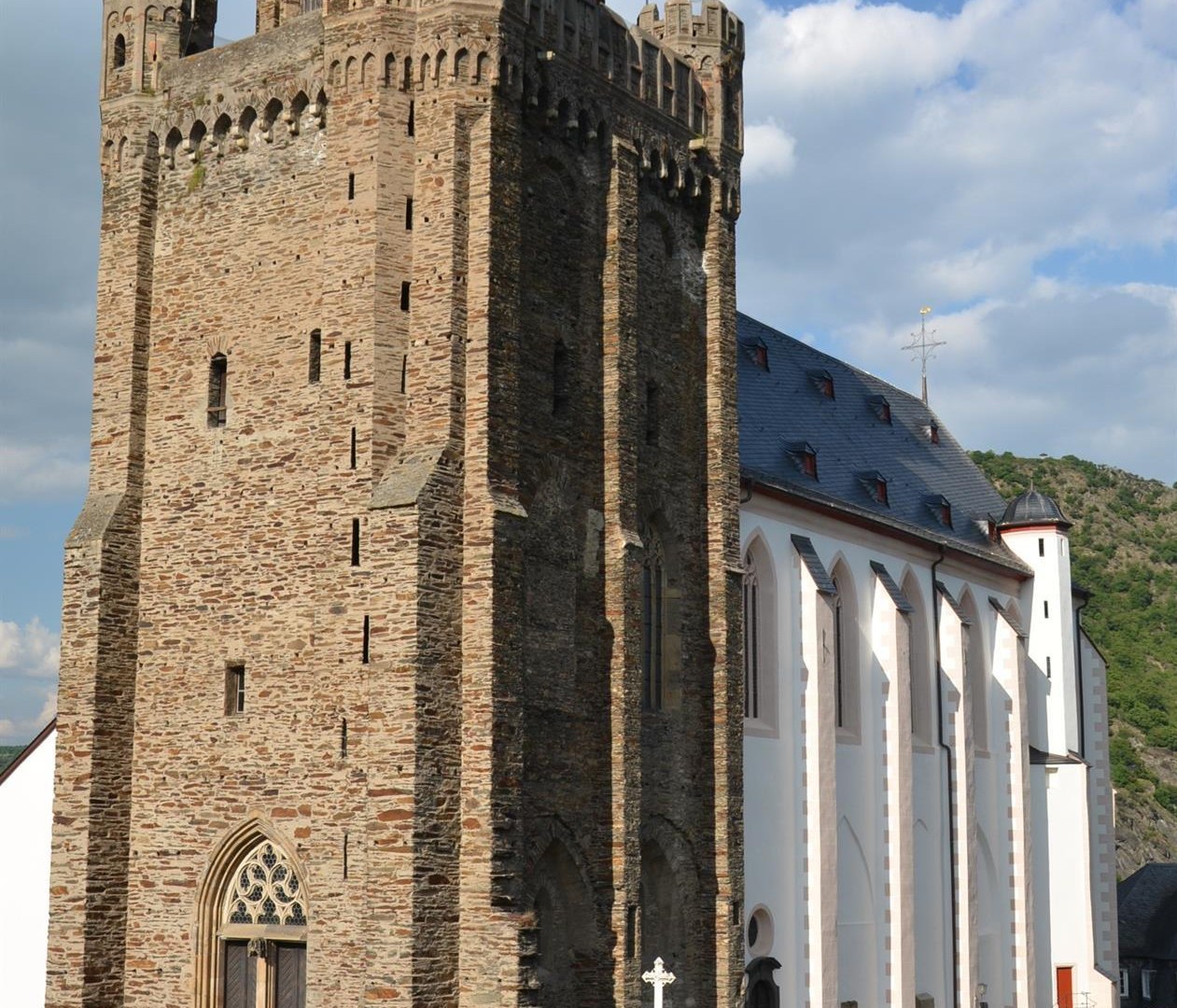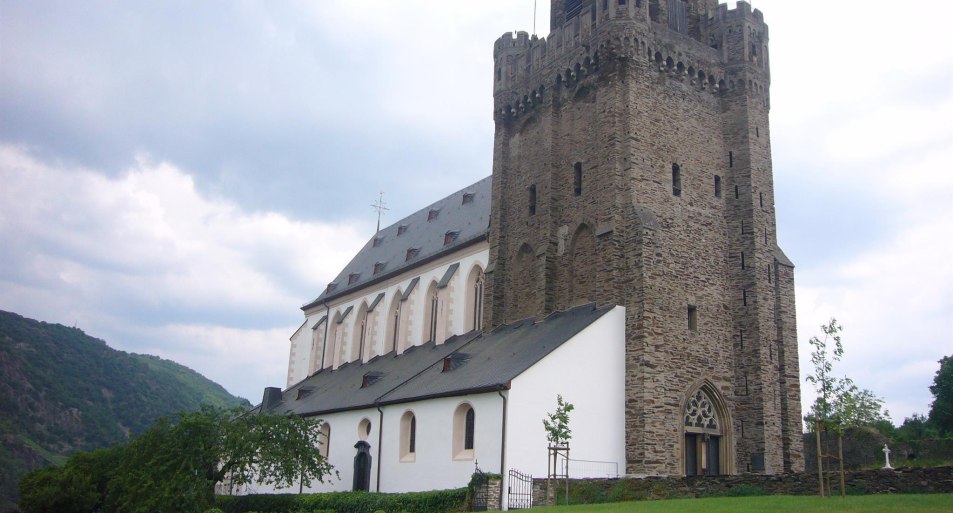Martinskirche
Martinsberg 1, 55430 Oberwesel
The origins of the parish of St. Martin date back to the time of the Franks. It served as the center for pastoral care in a large parish district. With a document dated December 12, 1303, the Archbishop of Trier, Dieter von Nassau, established a collegiate foundation at the Romanesque predecessor church of today's St. Martin's Church, intended for a provost, a deacon, and five canons. The right of patronage over the St. Martin foundation was held by the Schönburg family. This gave them the right to propose suitable clergy for a canon position. The Schönburgs thus had significant influence over the foundation and the church. The old Romanesque St. Martin's Church soon became too small for the newly established foundation, as the foundation's clergy required a larger choral area.
Around 1350, work began on the construction of today's St. Martin's Church. The architecture was modeled after the Church of Our Lady. While maintaining the same basic concept, the tower of St. Martin's Church was designed quite differently. Because the church was situated high above the town in a location important for defense, the tower was constructed as a fortified tower. It is the most convincing example of sacred defensive architecture of the Gothic style in the Rhineland.
The construction work on the church progressed only slowly, as the economic foundation of the foundation deteriorated with the rise of a monetary economy. It was not until around 1500 that the northern side aisle was completed. The southern aisle was never built due to financial reasons.
Like all foundations in the Rhineland, the St. Martin foundation was dissolved by Napoleon in 1802.
In St. Martin's Church, the wall paintings from the 16th century and a high Gothic Madonna from the mid-15th century deserve special attention. In the choir vault, the Gothic painting from the time of construction can once again be seen following the restoration work from 1962 to 1968.



